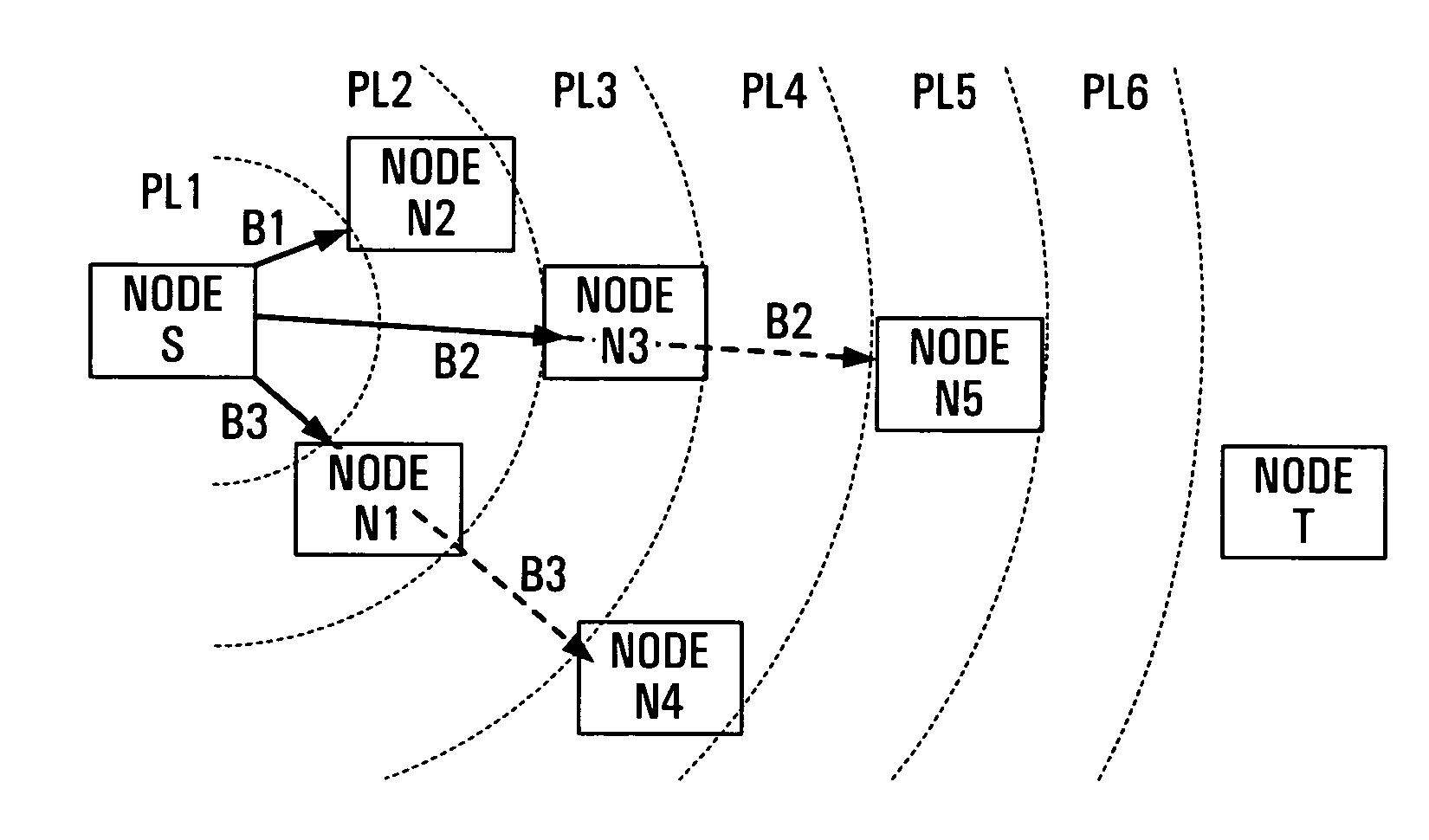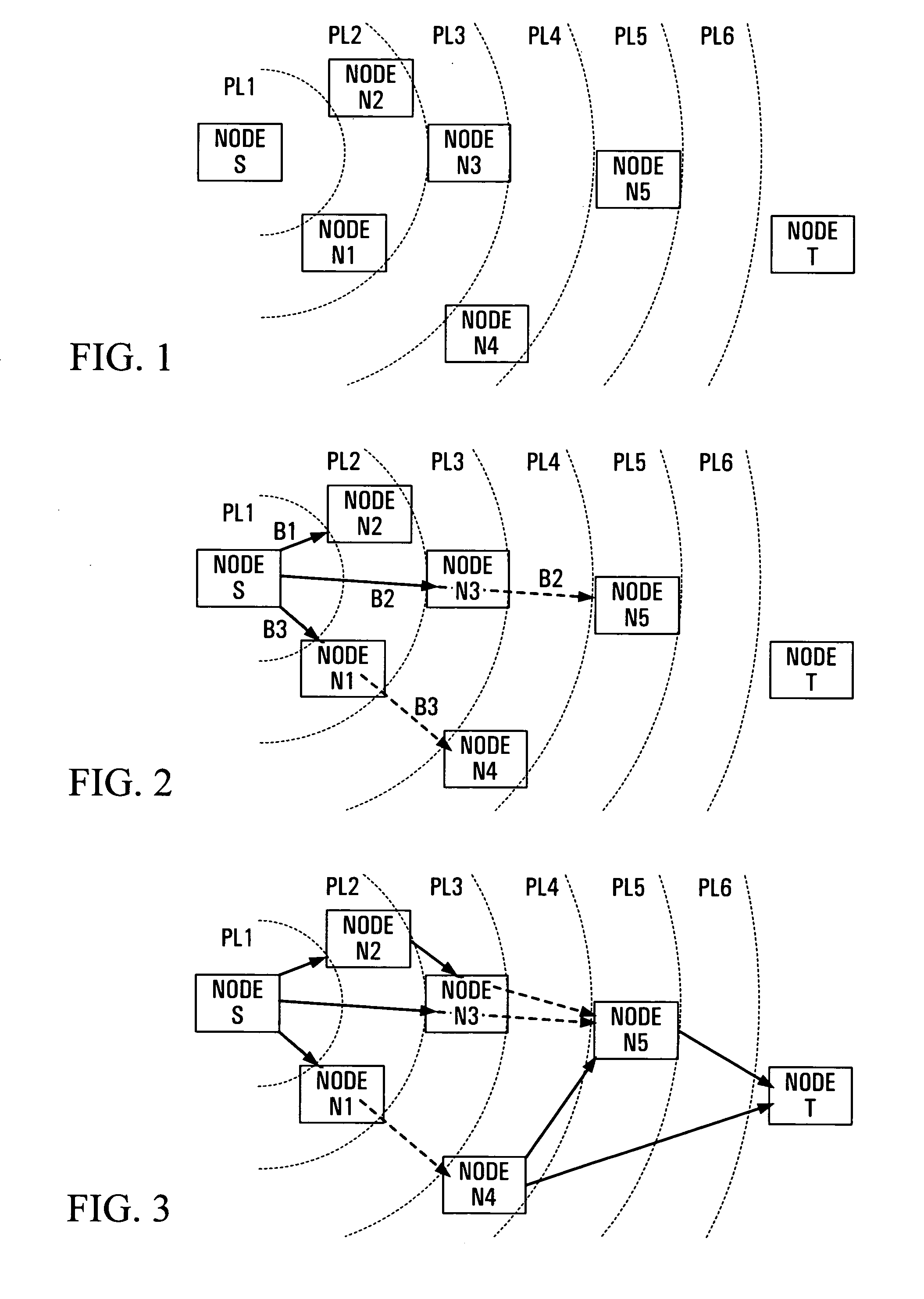Path selection in wireless networks
a wireless network and path selection technology, applied in the field of path selection in wireless networks, can solve the problems of affecting the overall system communication capacity, the discovery process of a wireless node is relatively complicated, and the source of interference is dominant, so as to achieve the lowest total cost
- Summary
- Abstract
- Description
- Claims
- Application Information
AI Technical Summary
Benefits of technology
Problems solved by technology
Method used
Image
Examples
Embodiment Construction
[0044]Referring to the drawings, FIG. 1 illustrates parts of a wireless access network having distributed nodes which are assumed to use omnidirectional antennas for communications between nodes via wireless communication paths or transit links as described above. By way of example, FIG. 1 shows a source node S, a target node T, and other nodes N1 to N5 which are distributed within a geographical region or service area.
[0045]Preferably, this service area is a wireless access service area within which wireless terminals, not shown and which may have any of various forms, can communicate with the nodes to which they are closest thereby to communicate for example with other terminals within the service area or with a wired network (not shown) to which at least one of the nodes can be connected.
[0046]However, the invention is not limited to this application, and applies to any communications between nodes of a wireless network regardless of the sources and destinations of signals to be ...
PUM
 Login to View More
Login to View More Abstract
Description
Claims
Application Information
 Login to View More
Login to View More - R&D
- Intellectual Property
- Life Sciences
- Materials
- Tech Scout
- Unparalleled Data Quality
- Higher Quality Content
- 60% Fewer Hallucinations
Browse by: Latest US Patents, China's latest patents, Technical Efficacy Thesaurus, Application Domain, Technology Topic, Popular Technical Reports.
© 2025 PatSnap. All rights reserved.Legal|Privacy policy|Modern Slavery Act Transparency Statement|Sitemap|About US| Contact US: help@patsnap.com


